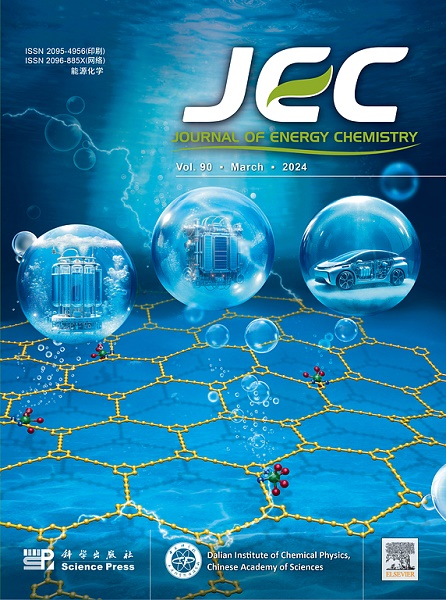Stochastic state of health estimation for lithium-ion batteries with automated feature fusion using quantum convolutional neural network
IF 13.1
1区 化学
Q1 Energy
引用次数: 0
Abstract
The accurate state of health (SOH) estimation of lithium-ion batteries is crucial for efficient, healthy, and safe operation of battery systems. Extracting meaningful aging information from highly stochastic and noisy data segments while designing SOH estimation algorithms that efficiently handle the large-scale computational demands of cloud-based battery management systems presents a substantial challenge. In this work, we propose a quantum convolutional neural network (QCNN) model designed for accurate, robust, and generalizable SOH estimation with minimal data and parameter requirements and is compatible with quantum computing cloud platforms in the Noisy Intermediate-Scale Quantum. First, we utilize data from 4 datasets comprising 272 cells, covering 5 chemical compositions, 4 rated parameters, and 73 operating conditions. We design 5 voltage windows as small as 0.3 V for each cell from incremental capacity peaks for stochastic SOH estimation scenarios generation. We extract 3 effective health indicators (HIs) sequences and develop an automated feature fusion method using quantum rotation gate encoding, achieving an R2 of 96%. Subsequently, we design a QCNN whose convolutional layer, constructed with variational quantum circuits, comprises merely 39 parameters. Additionally, we explore the impact of training set size, using strategies, and battery materials on the model’s accuracy. Finally, the QCNN with quantum convolutional layers reduces root mean squared error by 28% and achieves an R2 exceeding 96% compared to other three commonly used algorithms. This work demonstrates the effectiveness of quantum encoding for automated feature fusion of HIs extracted from limited discharge data. It highlights the potential of QCNN in improving the accuracy, robustness, and generalization of SOH estimation while dealing with stochastic and noisy data with few parameters and simple structure. It also suggests a new paradigm for leveraging quantum computational power in SOH estimation.

求助全文
约1分钟内获得全文
求助全文
来源期刊

Journal of Energy Chemistry
CHEMISTRY, APPLIED-CHEMISTRY, PHYSICAL
CiteScore
19.10
自引率
8.40%
发文量
3631
审稿时长
15 days
期刊介绍:
The Journal of Energy Chemistry, the official publication of Science Press and the Dalian Institute of Chemical Physics, Chinese Academy of Sciences, serves as a platform for reporting creative research and innovative applications in energy chemistry. It mainly reports on creative researches and innovative applications of chemical conversions of fossil energy, carbon dioxide, electrochemical energy and hydrogen energy, as well as the conversions of biomass and solar energy related with chemical issues to promote academic exchanges in the field of energy chemistry and to accelerate the exploration, research and development of energy science and technologies.
This journal focuses on original research papers covering various topics within energy chemistry worldwide, including:
Optimized utilization of fossil energy
Hydrogen energy
Conversion and storage of electrochemical energy
Capture, storage, and chemical conversion of carbon dioxide
Materials and nanotechnologies for energy conversion and storage
Chemistry in biomass conversion
Chemistry in the utilization of solar energy
 求助内容:
求助内容: 应助结果提醒方式:
应助结果提醒方式:


